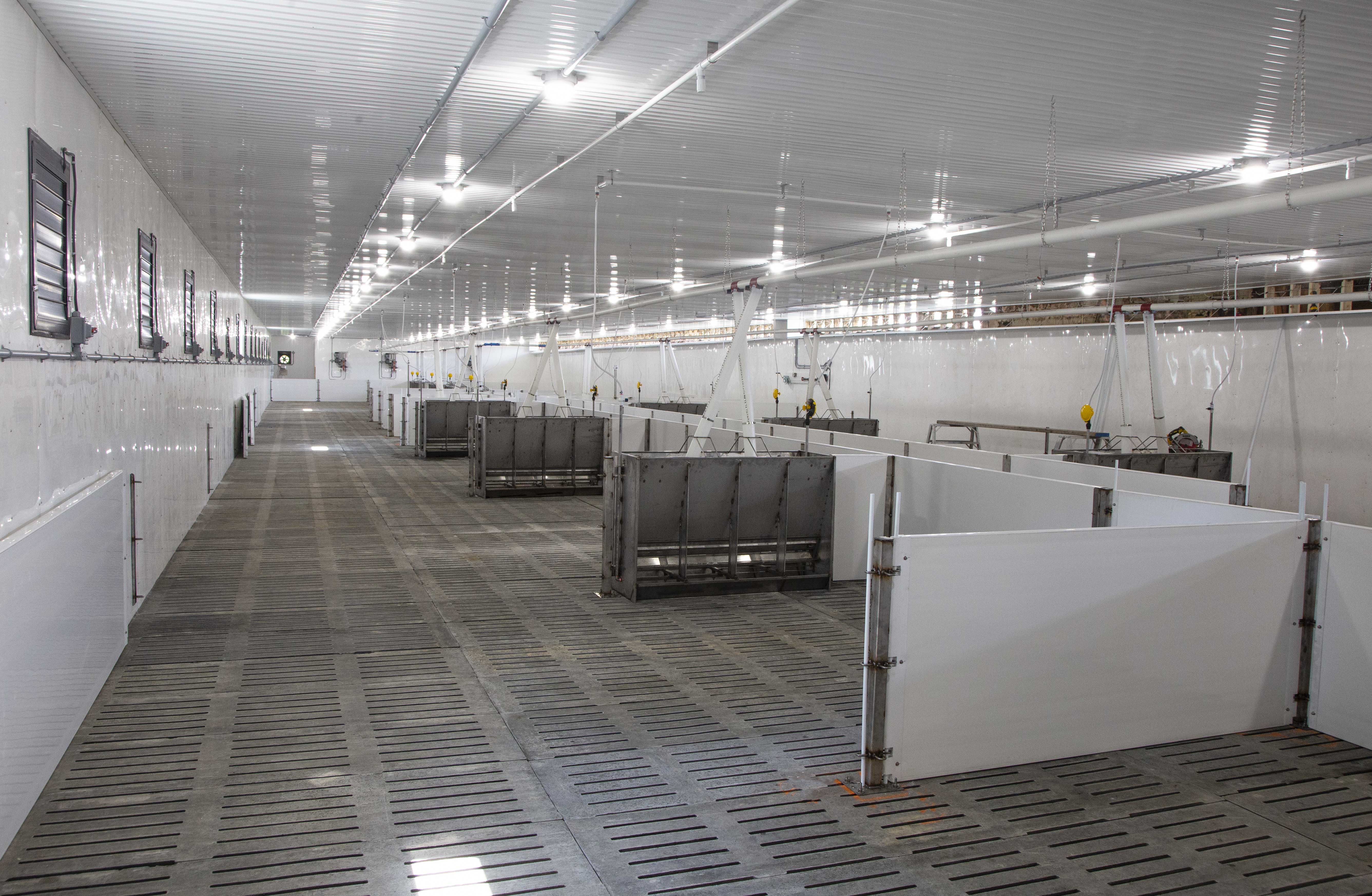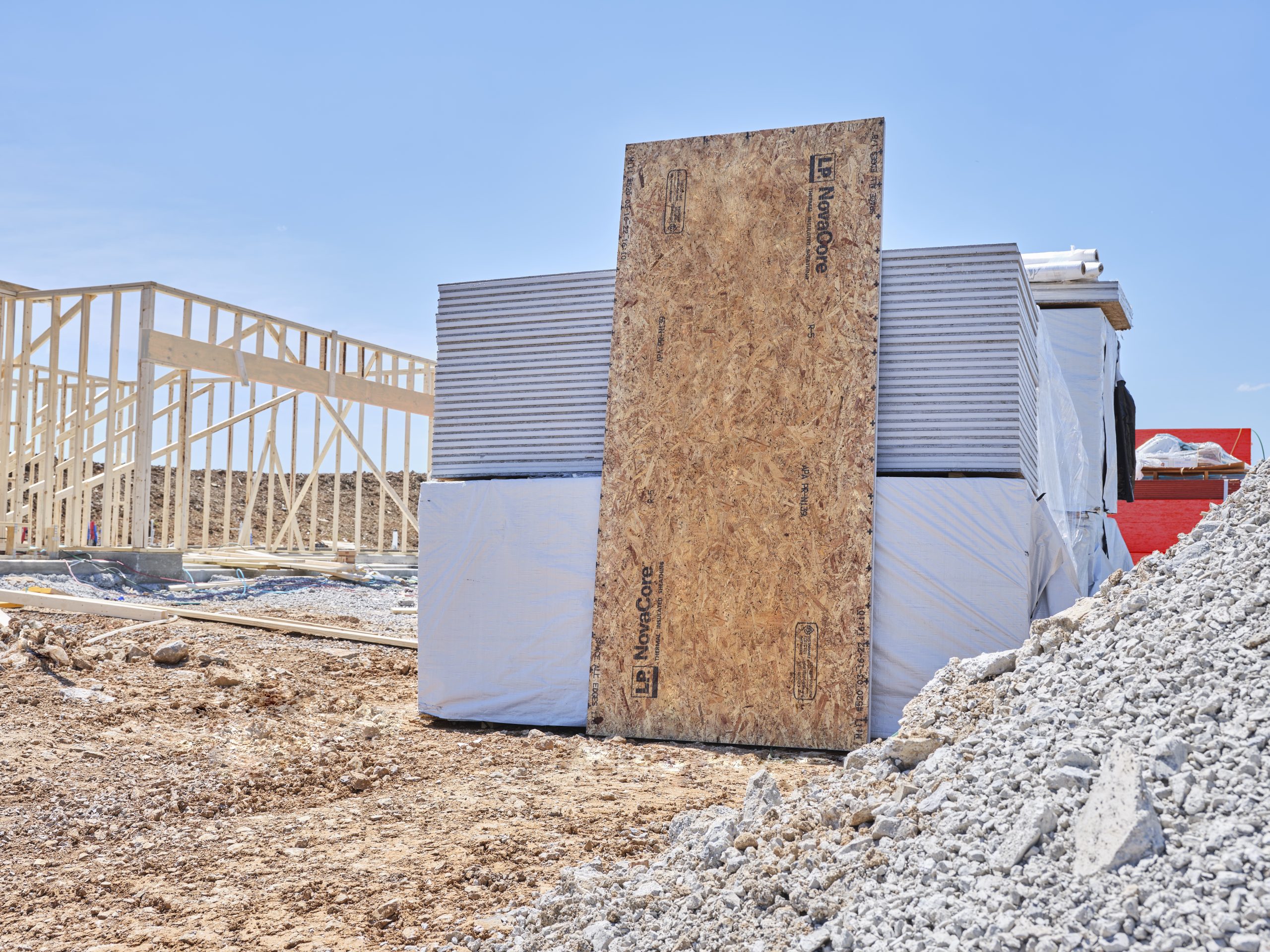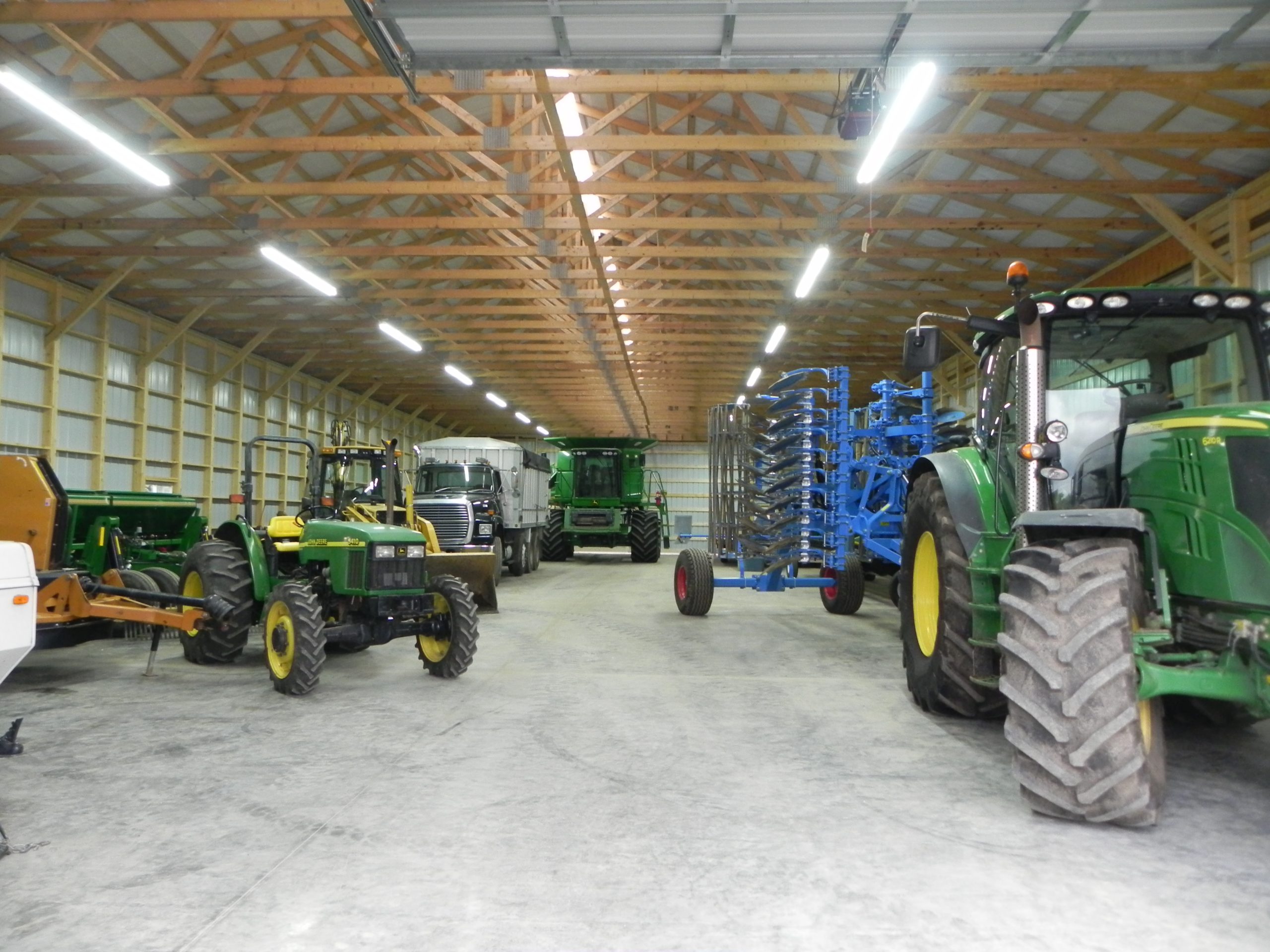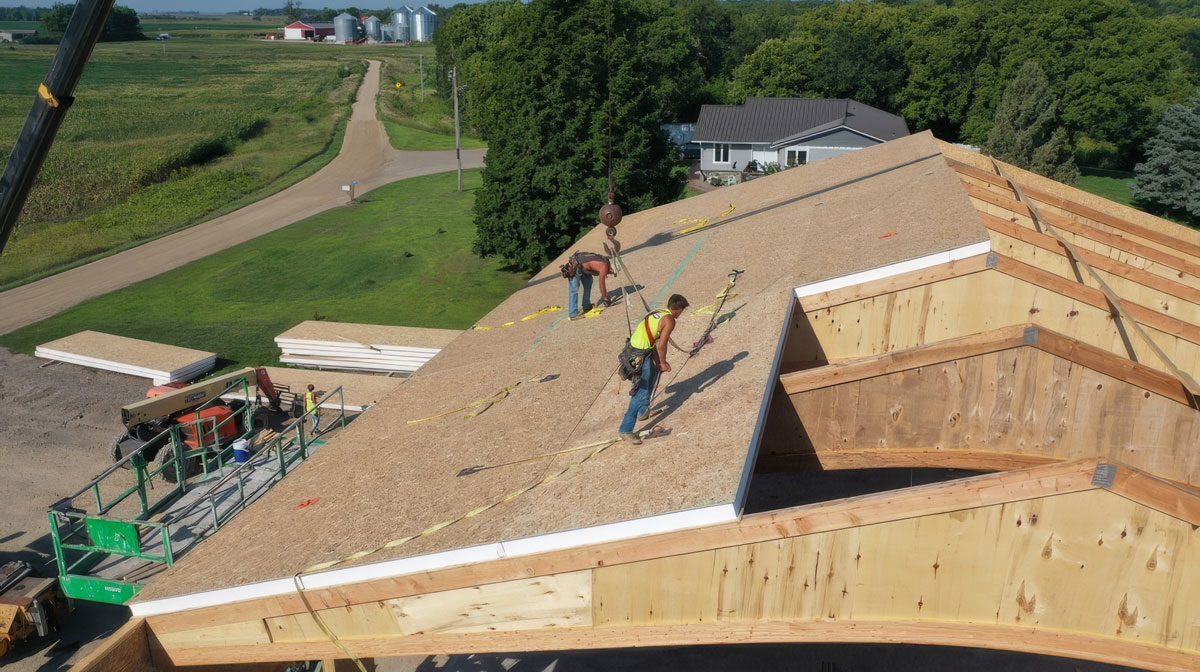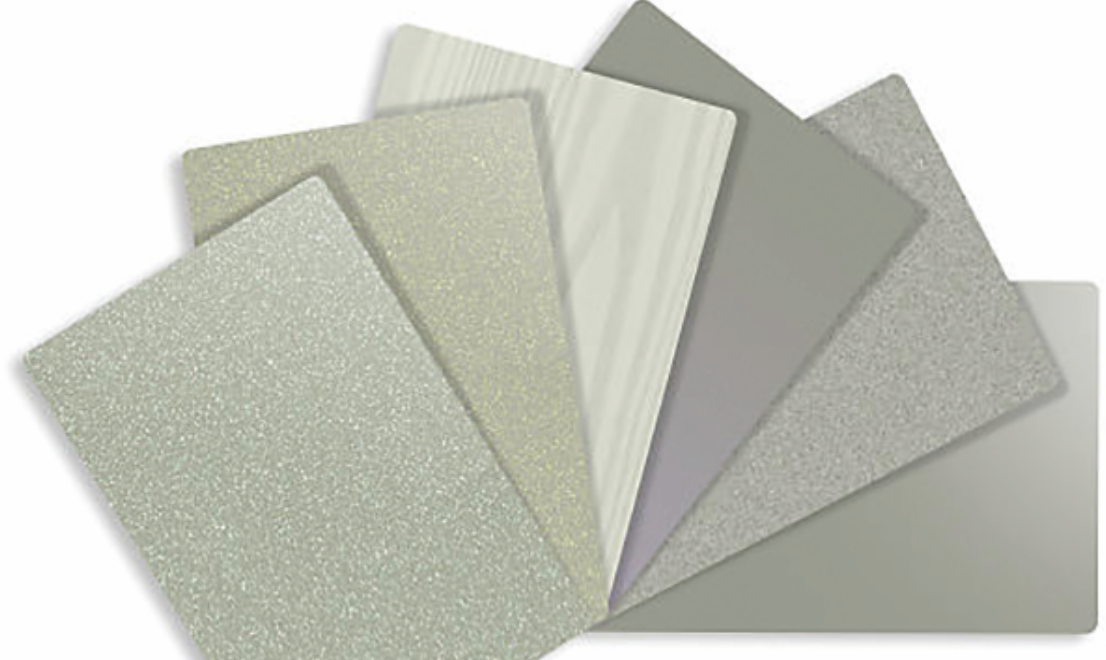By Jacob Prater
There are no perfect materials, but there are good material choices for each building situation. The interior of a livestock building needs to be hygienic, easy to clean, and durable. This is a really tall order for some parts of the building and presents a big challenge for a manufacturer that wants to make a good product that they can stand behind.
The interiors of livestock buildings are a unique environment with some serious challenges that require careful material selection. Of particular concern in livestock buildings is corrosion because the inside of a livestock building will be exposed to some very corrosive conditions (salt, acid, and oxidation).
Metal in Livestock Buildings
Metals, especially coated metals, can be great building materials in many environments, but they aren’t always the best choice when the environment gets acidic, salty, or has a fluctuating redox potential. (An explanation follows if you aren’t familiar.) Livestock manure and urine present the trifecta of tough environments for the use of metals, as the urine is acidic and salty and the manure is alive and thus the microbes in it are oxidizing carbon. When they run out of oxygen, they’ll use nitrogen, iron, and sulfur instead. These environments can even lead to the formation of hydrogen sulfide, which will oxidize and make sulfuric acid.
While metals are often great building materials, they are susceptible to the action of acids and oxidation that we refer to as corrosion. The corrosion process leads to the deterioration of metals through surface rust, pitting, and eventually the formation of holes. At the heart of it, corrosion is an electrochemical process.
The Electrochemical Process of Corrosion
Simply put, electrons are being transferred from one material to another (the material that loses electrons is getting oxidized and the material accepting the electrons is getting reduced) and then a second chemical reaction is occurring with the new materials. If iron metal is getting oxidized, the iron is likely going to go from an oxidation state of zero (think no charge) to an oxidation state of 2 or 3 (think 2+ or 3+).
In this scenario, the iron is losing 2 or 3 electrons. The iron 2 or 3 (iron 2 is rapidly converted to iron 3 if oxygen is present) that is formed is highly reactive with oxygen and water, resulting in the formation of rust. The presence of acids will increase the amount of oxidation, as acids readily accept electrons, while the metal, in this case iron, is losing them.
Once that rust starts, it grows and keeps on going unless you intervene with removal or chemicals and, even then, it sometimes will continue. The main tool to combat steel corrosion is galvanizing. This is normally all that’s needed for a building exterior, but in the case of a livestock building interior, galvanizing is likely to be insufficient. The reason for this is the acidity in animal urine.
Acids like those in urine can often react with metals, particularly iron, aluminum, zinc, and copper. For this reason, metal panels have a hard and short life if used in certain parts of livestock buildings. The acids in animal urine will slowly eat at the zinc coating, exposing the steel under the galvanized coating and lead to rust through the previously mentioned process.
Aluminum, which can be a great choice for lots of building environments (strong, light, non-corrosive), is considered “non-corrosive” in most situations. But this isn’t the case when that environment is a bit different. Normally, aluminum will form an oxide coating on its exterior that is quite stable, which protects the metal from deterioration, but this oxide coating is not durable in an acidic or basic environment. For this reason, aluminum isn’t a good choice for some livestock building interior uses.
The acidic environment in and around livestock manure and urine will eventually eat away at aluminum. Aluminum may still have a place in livestock buildings, though, and that’s for small-scale low-animal-density structures where the aluminum isn’t in contact with manure. Windows in a low-density livestock building would be an example of a setting where aluminum would be a good choice, especially if it is coated or painted.
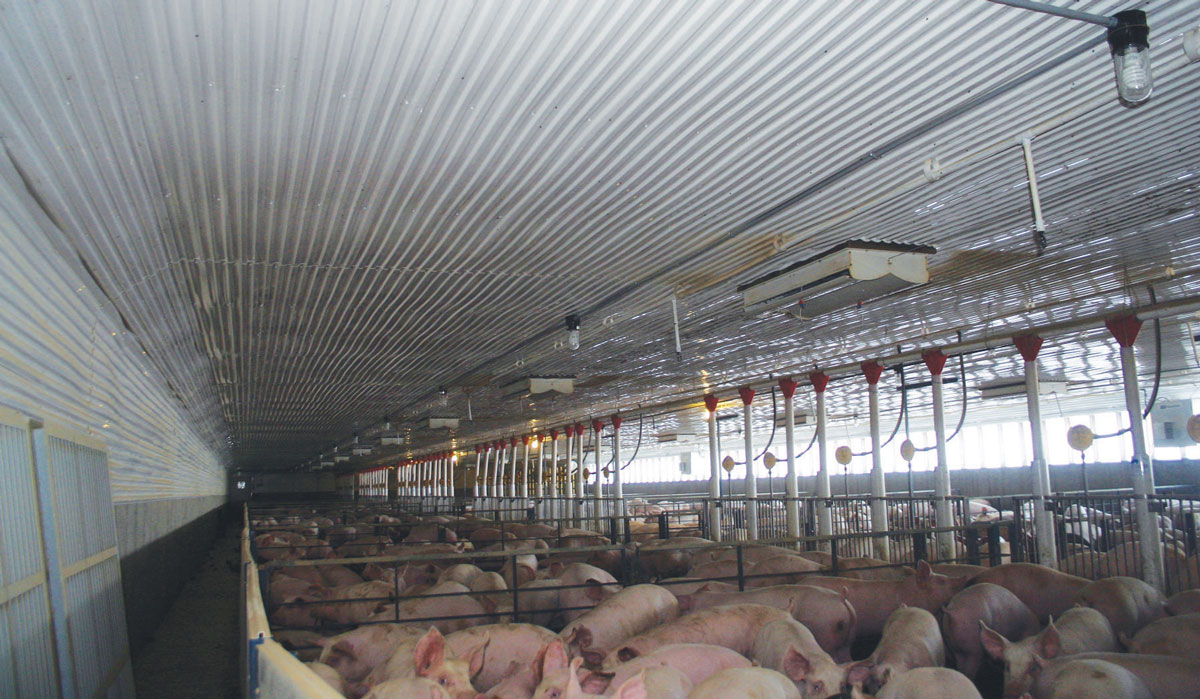
PVC Panels for Pig Farms. Photo courtesy of Amerilux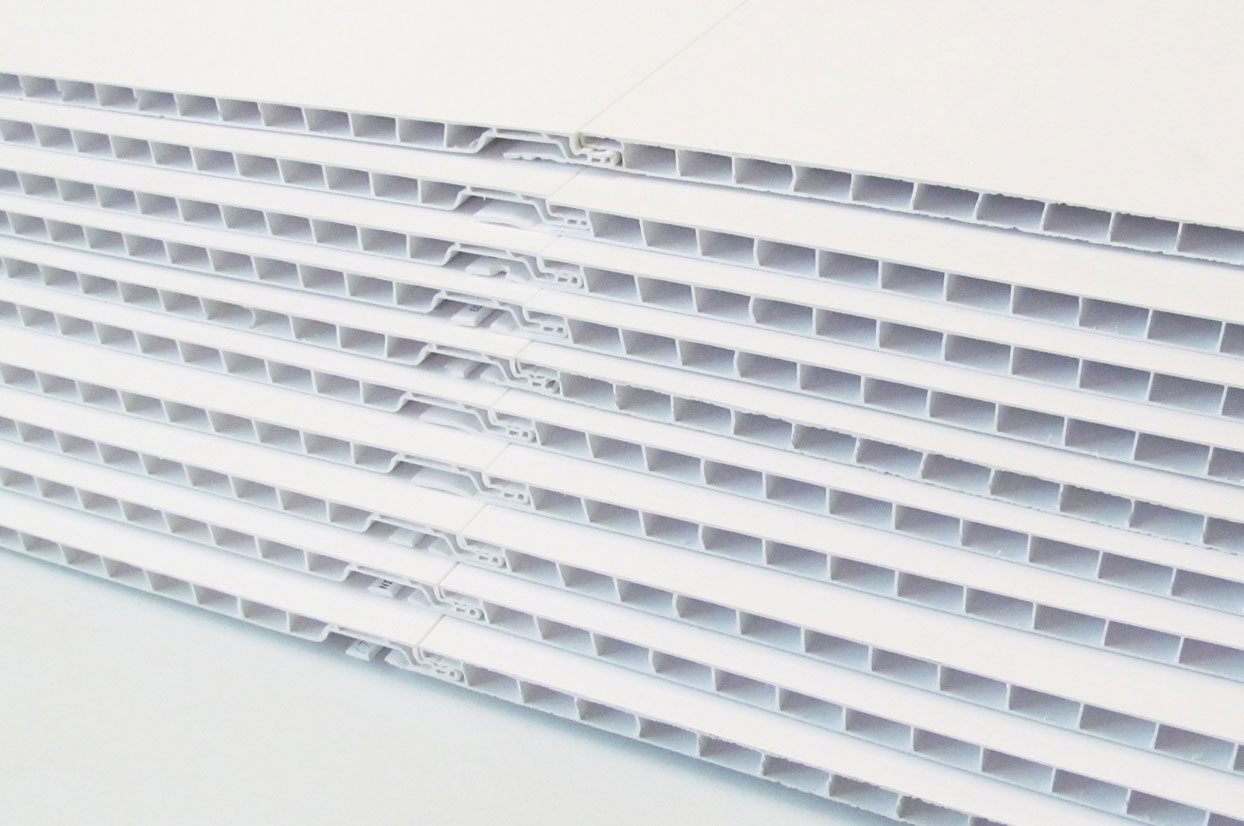

One could use stainless steel for livestock building interiors (it would be beautifully shiny!), but that would be at great expense, and even stainless steel can corrode in the challenging conditions of a livestock building interior. Thus, what a customer wanting a livestock building really needs for the interior is something non-corrosive and a bit more cost effective. Since we need tough, durable, easy-to-clean material, but stainless steel is likely too expensive, we will have to look to some other materials for livestock building interiors. This is where materials like PVC and plastics come in, though stainless will still play a role for some fixtures and for fasteners.
PVC, Fiberglass & Plastics in Livestock Buildings
Materials such as PVC, coated fiberglass, and various plastics can probably be used successfully in livestock building interiors. While materials like fiberglass, PVC, and other plastics don’t corrode, they aren’t the best materials for exterior use in many cases. UV light is often a catalyst for the degradation of these materials along with high temperature and mechanical stress. The good news here is that we are going to use these materials inside, so high temperature and UV are much smaller concerns than they would be for exterior use. Mechanical stress still remains an issue for the durability of these non-corrosive material, as livestock are always hard on things, but this would be no different for metal.
So why do materials such as PVC, fiberglass, and plastic not corrode? Well, simply put, these aren’t metals and are thus not going to be sensitive to oxidation and reduction reactions in the same way that metals are. The simplest explanation here is that metals are pretty free with electrons, as they allow them to move easily within the material (this is why they are good electrical conductors) while other materials may not.
Generally speaking, materials that aren’t good conductors of electricity are good insulators (glass and ceramics would be in this category) and are also less likely to corrode. PVC, fiberglass, and plastics can certainly oxidize, but the conditions required for that to occur require a lot more energy and different conditions compared to metals like iron. Similarly, glass doesn’t corrode, but it is probably obvious why a bunch of glass panels aren’t used inside a livestock building.
Anyone who has been around animals knows that they sometimes chew on, bite, and even eat things that they shouldn’t (I am looking especially at you goats!). With this in mind, it is important to make sure that things that might get this sort of treatment from livestock aren’t going to harm them if inadvertently ingested. While none of the materials mentioned (PVC, fiberglass, plastics) are advisable to ingest, they have been used in and around food and water for human and animal use for quite some time. But since you wouldn’t eat them, it is probably wise to use the least potentially toxic where it might get chewed and others in places where that isn’t as likely. Additionally, for the purposes of durability, it may be advisable to construct things in a way that minimizes or reduces access for chewing and biting these materials.
Quick thoughts here are that PVC and fiberglass would be great for windows. If windows are up and away from urine and manure, then aluminum frames can work well and may be cheaper and lighter than other options. PVC and fiberglass could also work well for doors. Stainless could be used here if the added strength and durability justify the expense. PVC and fiberglass can also be used for wall panels.
Plastics might make the most sense as dividers and panels amongst the livestock (maybe with stainless tubing around the edges to deter the animals from chewing on them). Putting plastics where the animals might chew on them is probably OK, as many of these are the same types of plastic that we use for cutting boards and milk jugs; in other words, they are food safe. Plastics such as high density polyethylene (HDPE) are also more impact resistant than PVC (but also more expensive), so these may make the most sense for dividers.
Other Considerations in Construction of Livestock Buildings
One last consideration is that the corrosive environment in livestock buildings is not limited to the contact with manure and urine. The ventilation system is likely to encounter issues with corrosion as well. Some of the gases that will be vented (ammonia and potentially hydrogen sulfide) can react with moisture to create acids and then, when neutralized by reacting with surfaces, create salts, leading to corrosion in and around ventilation (whether passive vents or fans). Paying attention to these areas is important as well. Consistent removal of manure and urine, or consistent use of bedding, or both, can help reduce the formation and release of these gases and ensure the longevity of all parts of a livestock building. RB

